
views
Adinkra Symbols and Meanings
Adinkrahene The adinkrahene symbolizes leadership and charisma. It’s also called the “king” symbol or “chief of the Adinkra” symbols. Adinkrahene is associated with royalty and greatness and often appears in pottery, fabrics, and architecture. The adinkrahene symbol is the first Ghanaian symbol, from which all others are said to have sprung.
Gye Nyame Gye nyame means “Except for God.” It’s an Adrinka symbol that represents the omnipotence of God. Gye nyame is inspired by the Akan proverb, “This great panorama of creation dates back to time immemorial, no one lives who saw its beginning and no one will live to see its end, except God.”
Sankofa Bird The sankofa bird learns from its past to look to the future. It also stands for learning from past mistakes so you make the right decisions going forward. The sankofa bird symbol serves as a reminder that mistakes are never too big to be undone.
Sankofa Heart The heart variation of the sankofa symbol also stands for reaching back to the past. Like the sankofa bird symbol, this version means “go back and get it!” in the Twi language of the Ghanaian-Akan people.
Dwennimmen Dwennimmen signifies strength in mind, body, and soul. It translates to the “horns of a ram,” and also symbolizes wisdom, learning, and humility. It reflects the idea that a ram fights before giving in to being killed, which mirrors the connection between strength and humility.
Funtumfunefu Denkyemfunefu Funtumfunefu denkyemfunefu is a symbol of unity and diversity. It appears as a 2-headed crocodile with one stomach to represent a group that shares a common destiny. The funtumfunefu denkyemfunefu stands for humanity’s shared connection among its many cultural differences.
Nkyinkyim Nyinkyim is associated with the ups and downs of life. The Akan Twi word nkyinkyim means “twisting.” Nkyinkyim also signifies initiative, dynamism, and versatility, as well as prudence, balance, and vigilance. It’s also linked to an Akan proverb meaning “Life is what you make of it.”
Denkyem Denkyem symbolizes adaptability and cleverness. This crocodile symbol is based on the proverb, “The crocodile lives in the water, yet breathes the air.” The denkyem symbol is a reminder to be flexible in life, so you can make your way in and out of any situation that arises.
New Onnim Nea onnim represents knowledge and learning. Nea onnim means “he who does not know,” but the full version is "Nea onnim no sua a, ohu," which means “he who does not know can know from learning.” It remains a symbol of lifelong education and the quest for knowledge.
Nsoromma Nsoromma is a symbol of guardianship. It is the Akan word meaning “star,” and translates to “child of the heavens.” Nsoromma reinforces faith in a child’s dependency on a parent and in God and is also associated with love, bonding, and faithfulness in marriage.
Osram Ne Nsoromma A variation of nsoromma that looks like a crescent moon turned on its side with a star above it. It connects the star (husband) to the sky (female) as a symbol of marriage.
Aban Aban signals strength and authority. It’s associated with royalty whenever it’s pictured as the king’s castle or home.
Abe Dua Abe Dua is a symbol of wealth, self-sufficiency, and resourcefulness. This palm tree symbol represents the many resources that come from a single palm tree, including wood, fruit, and oil.
Abode Santann Symbolizes the totality of the universe with an image of the sun’s rays, the moon, and the eye.
Abusua Pa Means “good family,” as a symbol of family unity, along with love and loyalty between family members.
Adwo Represents peace, tranquility, and quietude; means “calmness.”
Agyin Dawuru Stands for faith, alertness, and duty to a leader; it’s based on a story about a servant who beat a gong for the king of the Ashanti people.
Akoben Signals the readiness to be called to action; it appears as a war horn.
Akofena Symbolizes both state authority and the authority of a ruler. It appears on Ghana’s coat of arms as a sword of war.
Akoko Nan Stands for discipline and nurturing as a symbol of kindness. It’s taken from a proverb that means “The foot of a hen steps on the child (chick) but it doesn't kill the child (chick)."
Akoma Ntoaso A symbol of togetherness and unity, as it pertains to a charter. It’s a more specific form of “akoma,” meaning “heart.”
Akoma Represents love, goodwill, and fondness, along with patience, endurance, and consistency.
Ananse Ntentan Symbolizes wisdom, craftiness, and creativity. It’s based on the Ghanaian folklore story of Ananse, a trickster spider whose cunning gets him what he wants.
Ani Bere A Enso Gya Signifies patience, self-discipline, and self-control. It’s linked to the idea that no matter how serious you are, your eyes don’t become red.
Anyi Me Aye A A symbol of being ungrateful and without gratitude; it means “if you will not praise me.”
Asaawa Represents sweetness, pleasure, and hedonism. It refers to sweet berries, along with the proverb, "Sweetness does not stay in the mouth forever."
Asase Ye Duru Stands for providence and the divinity of Mother Earth; means “the earth has weight.”
Asetena Pa A symbol of wealth, spending, and the upper class. It’s connected to a proverb meaning, “Good living is forgetfulness.”
Aya Signals endurance, independence, and perseverance, as well as resourcefulness; depicted as a fern.
Bese Saka Symbolizes affluence, power, and plenty. It’s also associated with cola nuts, or togetherness and unity.
Bi Nka Bi Another fern symbol that represents independence, endurance, and defiance against difficulties.
Boa Me Na Me Mmoa Wo An emblem of cooperation and interdependence. It’s linked to the proverb, “Help me and let me help you” and “The left hand washes the right hand…”
Boafo Ye Na Symbolizes support, cooperation, and teamwork; illustrates how rare a willing helper can be.
Dame Dame Means craftiness, intelligence, and strategy, and translates to “checkered.”
Dono Ntoaso Stands for alertness, goodwill, and united action as illustrated in a double-talking drum.
Dono A symbol of praise, goodwill, and rhythm in the form of a tension-talking drum.
Duafe Symbolizes women and their feminine qualities, like patience, love, and care; a wooden comb.
Dwantire Represents both innocence and guiltlessness as a ram’s head to describe how the innocent do not fear accusation.
Eban Signifies safety, security, and love; means “fence.”
Epa An emblem of law and justice appearing as a handcuff symbol.
Ese ne Tekrema Stands for improvement, advancement, and growth. It’s also associated with the need for friendliness and interdependence, in the form of teeth and a tongue.
Esono Anantam A symbol of protection and leadership, as well as power and security; linked to an elephant’s footprint.
Fafanto Symbolizes tenderness, gentleness, honesty, and fragility in the form of a butterfly’s wings.
Fawohodie A symbol of freedom, independence, and self-determination. It’s linked to the proverb, “Freedom walks with suffering.”
Fihankra Represents brotherhood, safety, and completeness; illustrated as an enclosed home or compound.
Fofo Acts as a warning against jealousy and covetousness; a flowering plant.
Gyawu Atiko Means valor and bravery as a companion symbol to the Kwatakye Atiko, or the back of a gyawu’s (warrior’s) head.
Hwehwemudua Symbolizes excellence, perfection, and knowledge. It describes a measuring rod or ruler.
Hye Wo Nhye (Hye Anhye) Stands for toughness and permanence, along with the idea of being unburnable.
Kete Pa A symbol of a good and successful marriage, as represented by a “good bed.”
Kokuromotie Signifies cooperation, participation, and teamwork. It’s also associated with harmony, and a proverb stating, “We don't bypass the thumb to tie a knot.”
Krado (Mmara) Represents the authority of the court as a symbol of law and order.
Kramo Bone Amma Yeanhu Kramo Pa A symbol which warns against deception and hypocrisy among Muslims; separates the idea of a good and bad Muslim.
Krapa (Musuyidee) Symbolizes spiritual balance, good fortune, and good luck. “Krapa” refers to a “good soul,” while a “musuyidee” removes filth or evil.
Kuronti ne Akwamu Stands for democracy and the sharing of ideas; the two groups (kuronti and akwamu) can form a village council and signify working together.
Kwatakye Atiko Symbolizes valor and bravery; also known as gyawu atiko, which illustrates the hairstyle of Kwatakye, a famous warrior.
Kyemfere Represents knowledge, experience, and service. It’s also associated with rarity and antiquity, as seen by a potsherd, or broken piece of ceramic.
Mako A symbol of inequality and uneven development; from a proverb that says, “All peppers on the same plant don't ripen at the same time."
Mate Masie Represents wisdom, knowledge, and prudence. It involves the idea of keeping wisdom to use again.
Mekyea Wo Signifies greeting, recognition, and respect. When members of the Akan ethnic group meet, they greet each other to recognize the other person’s humanity.
Menso Wo Kenten Stands for economic self-reliance and industry; means “I am not carrying your basket.”
Mframadan Symbolizes resilience and the ability to face life’s challenges; represented by a well-ventilated house.
Mmeramubere A female cross to symbolize warmth, sunshine, and vitality.
Mmeramutene A male cross associated with sunlight, warmth, and endurance.
Mmere Dane Signifies the temporary nature of good times and how time changes.
Mpatapo A symbol of pacification, reconciliation, and forgiveness, also known as a pacification knot.
Mpuannum Represents loyalty and priestly office with the image of 5 tufts of hair.
Nea Ope Se Obedi Hene Stands for leadership qualities and skills; it refers to “he who wants to be king.”
Nkonsonkonson An emblem of unity and community that looks like a chain.
Nkotimsefo Mpua Represents loyalty and a readiness to serve; illustrated by a hairstyle used by court attendants.
Nkrabea A symbol of fate and determinism. It’s also associated with inequality to show that everyone’s destiny is unique.
Nkyemu (Nkyimu) Signifies precision and quality craftsmanship, which is mirrored by the image of a cross design used in Adinkra cloth.
Nnamfo Pa Baanu Represents friendship and companionship; refers to “two good friends.”
Nsaa Stands for excellence and authenticity as shown by a well-woven cloth.
Nserewa A symbol of affluence and wealth in the form of cowries, a pre-colonial form of currency in West Africa. It can also symbolize something sacred when used by priests.
Nteasee Signifies both understanding and cooperation.
Nyame Baatanpa (Awurade Baatanfo) Describes the caring and nurturing quality of God when seen as a good parent.
Nyame Biribi Wo Soro Signifies hope and inspiration; taken from a proverb meaning “God, there is something in the heavens; let it come to me.”
Nyame Dua Symbolizes God’s presence and protection in the form of a tree stump, seen as God’s tree.
Nyame Nti Represents both faith and trust in God; means “by God’s grace” or “because of God.”
Nyame Nwu Na Mawu Stands for the soul’s immortality and is illustrated by the words, “God won’t die for me to die.”
Nyansapo A symbol of wisdom, ingenuity, intelligence, and patience; it means “wisdom knot.”
Obohemaa Stands for preciousness and treasure. It means “queen of stones,” which refers to a diamond.
Odo Nyera Fie Kwan A symbol of love taken from a proverb that means, “love does not lose its way home.”
Ohene Aniwa Symbolizes vigilance, intelligence, protection, and security. It’s also associated with defense, power, and far-sightedness, and refers to the “king’s eyes.”#Okodee Mmowere Signifies strength, bravery, and power; describes the talons of an eagle.
Okuafo Pa Represents diligence, hard work, and entrepreneurship; illustrated by a good farmer.
Osrone Stands for the moon, along with a proverb that means, “It takes the moon some time to go round the notion.”
Owo Foro Adobe Signifies ingenuity and excellence, in addition to performing an impressive or unusual feat as shown by a snake climbing up a palm.
Owuo Atwedee Stands for the certainty and universality of death, also called the ladder of death.
Pa Gya A symbol of war represented by the phrase, “to strike (or make) fire.”
Pempamsie Symbolizes foresight, readiness, and valor; also associated with being steadfast, fearless, and hardy.
Sepow A symbol of justice, which is described as an executioner’s knife.
Som Onyankopon Signifies the devotion and worship of God.
Sunsum (Ntoro) Stands for spiritual purity and the cleanliness of the soul; The Akan people believe that God the creator comes to a child through their father, while a mother transfers mogya, or blood.
Tabono Symbolizes strength, confidence, and persistence as shown by an oar.
Tamfo Bebre Represents ill-will, jealousy, and envy; means “the enemy will suffer.”
UAC Nkanea Signifies technological advancement as depicted by UAC lights, which are street lights.
Wawa Aba A symbol of being hardy, tough, and persevering, as seen by the seed of the tropical wawa tree.
Wo Nsa Da Mu Stands for democracy and pluralism; inspired by a proverb that means, “When your hands are inside the dish, people don't eat everything and leave you nothing.”
Woforo Dua Pa Represents supporting good causes in the form of “climbing a good tree.”
A History of Adinkra Symbols & Designs
Adinkra means “goodbye” or “farewell” in the Twi dialect of Ghana. It also refers to a specific kind of cloth upon which these symbols are stamped. Adinkra was first only worn by Asante kings and dates back to Nana Kofi Adinkra, or the king of Gyman. People began painting adinkra symbols on cloth in the 19th century to wear at funerals, but today wear adinkra clothes on many special occasions. The Twi dialect is used by the Akan ethnic group, which includes nearly half the population of Ghana.
Making Adinkra cloth involves a specific process. Weavers divide Adinkra cloth into squares with lines made from bark dye. They then stamp the Adinkra designs onto the cloth using pieces of calabash gourd dipped in ink. Adinkra designs originally appeared in only black or reddish brown, but now include multiple colors.
Adinkra themes are taken from proverbs, folktales, and Akan sayings. The intricate list of symbols mentions themes ranging from love, bravery, and faith in God to democracy, protection, and wealth. They take inspiration from mythical characters, everyday objects, and elements of the natural world.










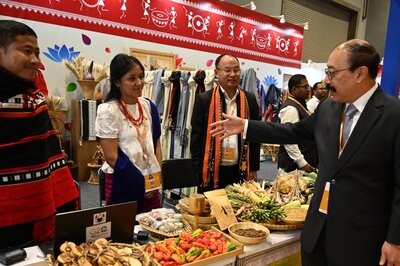
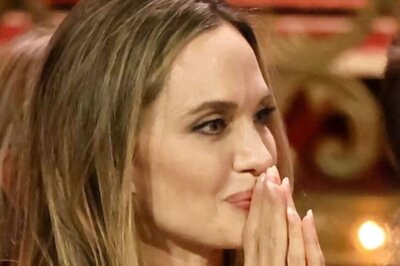

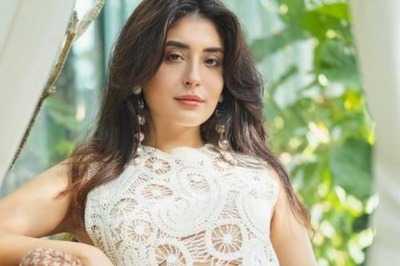
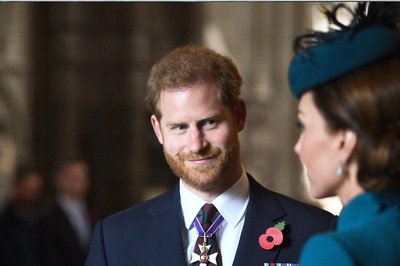
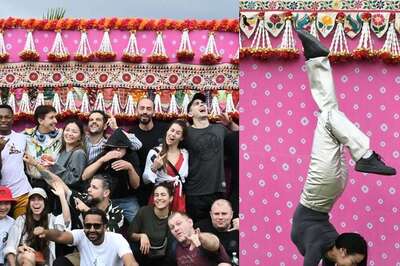
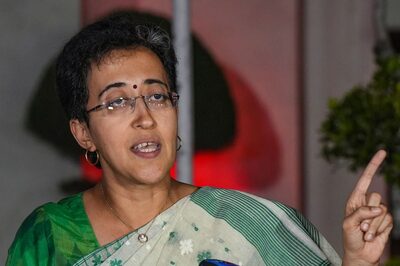
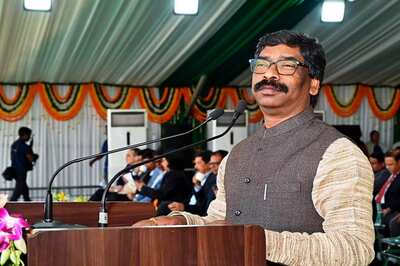

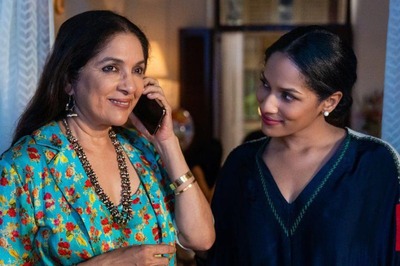
Comments
0 comment